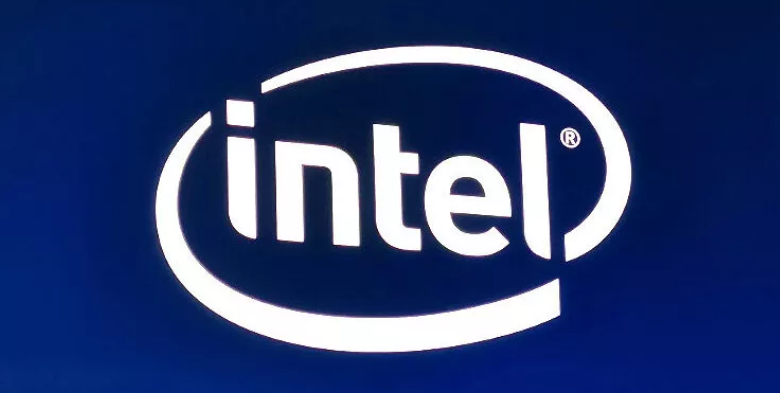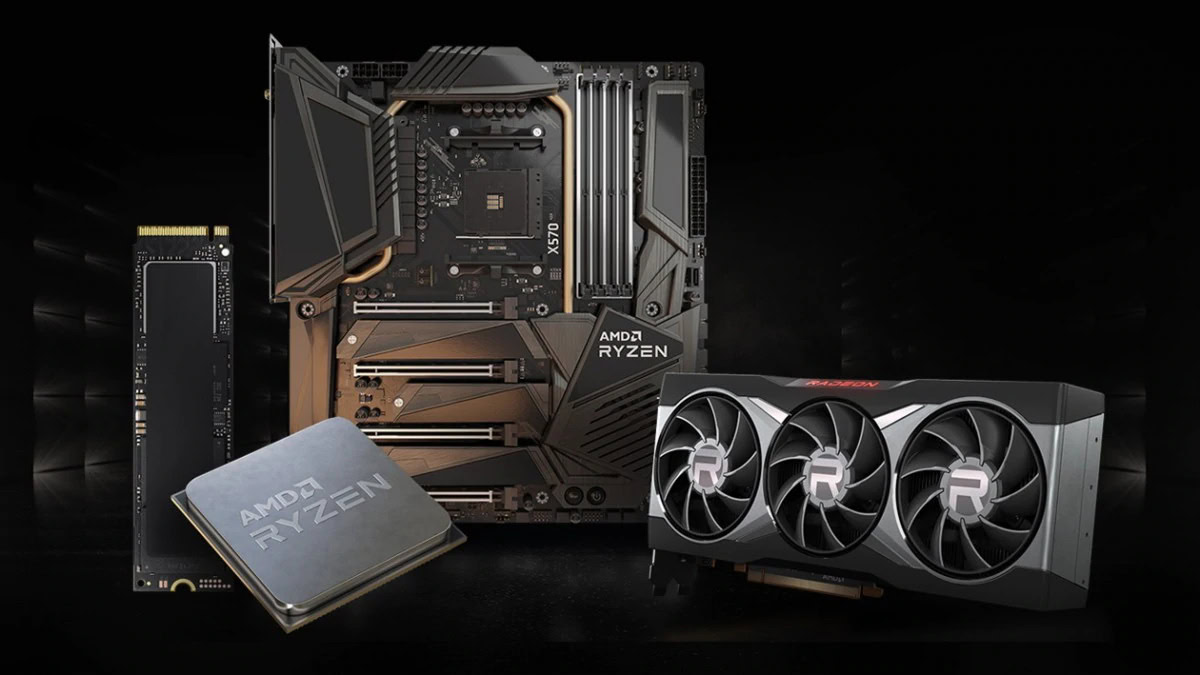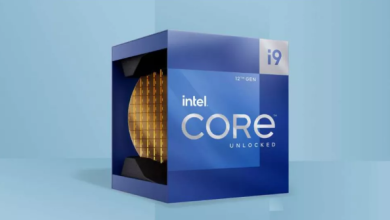
When buying the best CPU for your PC build, you have to pick either AMD or Intel. Intel was consistently the way to go for most use cases and budgets until a few years ago. In recent years, AMD has surprised us by quickly gaining steam with its Ryzen processors and becoming the recommended CPU brand for nearly all use cases. Regardless, AMD vs Intel is still not a battle that has a clear winner.
Intel is far from being totally out of the game. While it lags behind the curve in shrinking its manufacturing process, Intel is still putting out some solid CPU offerings that could make for a decent purchase. With silicon shortages hitting the market, CPUs are in short supply, so the AMD vs Intel race gets quite close at times. Let’s take a deeper look at how AMD and Intel are different and which one is a better choice for CPU buyers.
AMD vs Intel — Where they stand
AMD and Intel have a long intertwined history in the semiconductor market. Intel is a Goliath in the space, leading the charge with its CPUs since the IBM era. AMD hopped on the scene fairly early as a licensed manufacturer for Intel and others. It later started making its own chips, offering cheaper alternatives to Intel. AMD’s first big moment came when it introduced the first x86_64 chip in 2003, beating Intel. This 64-bit move pushed AMD forward. It became an Intel alternative with a better price-to-performance in the 2000s.
AMD and Intel have a cross-licensing agreement under which Intel lets AMD make x86 CPUs, and AMD lets Intel use its x86_64 instruction set. AMD has historically been the underdog in this race. It lagged behind Intel by failing to implement a proper equivalent to Hyperthreading, among other architectural improvements. This is why Intel’s lower-end offerings could often beat AMD CPUs with much higher core counts. This was until AMD introduced its Zen architecture in 2017, with the first-gen Ryzen CPUs.
While AMD has brought in many architectural improvements with every new generation of Ryzen, Intel has had issues shrinking its fabrication process. After multiple generations on 10nm and 14nm processes, Intel is running out of tricks to bring sizeable performance gains with every new generation. With the latest 12th generation processors, it seems to have finally perfected the 10nm process that it now calls Intel 7. AMD currently uses a 7nm process because Intel has its own manufacturing foundries, while AMD uses third-party foundries, like those owned by TSMC.
On the other hand, Intel has years of experience and thus offers great performance despite the larger fabrication process. It also has a broader range of CPU offerings at nearly every price point and better availability across all offerings in times of silicon shortages.
What does AMD offer?

AMD has a relatively lean lineup of CPUs. With the new Zen architecture, its offerings have gotten much more streamlined. There are options available at different prices for consumers, although not as many as Intel offers.
AMD has managed to expand its range of CPUs with the Ryzen lineup. You get four tiers of Ryzen CPUs — Ryzen 3, 5, 7, and 9. You also get the Threadripper series, the beefiest consumer CPU AMD sells. On the lower end are the Athlon processors. AMD also has a solid graphics card lineup under the Radeon brand and server solutions under the EPYC branding.
What does Intel offer?

Intel is a veteran in the CPU business, and as such, it has a much more diverse range of offerings. There’s an Intel chip at almost every price range and often more than just one. While it has always been and continues to be not the best value-for-money choice, it has some interesting CPUs to offer.
Intel’s Core series has been ruling the mainstream CPU market for years. It currently has four tiers — i3, i5, i7, and i9. You also get the Pentium and Celeron ranges, which are still kicking it in the budget market. Intel has the Xeon range for servers. On the graphics side of things, it hadn’t done much until very recently, with the Iris Xe graphics architecture.
AMD vs Intel — budget and mid-range CPUs

Both Intel and AMD have a solid presence in the budget and mid-range segments. They have head-to-head competitors in the space for the most part, which means that consumers have options between the two.
AMD A-Series and Athlon vs Intel Pentium and Celeron
Both AMD and Intel have two prominent series in the low-budget market. AMD has the A-Series APUs, which have enjoyed popularity in super affordable systems and come with integrated graphics. The other offering is the Athlon series, which has come from being its former flagship series to powering budget AMD systems.
Intel has two offerings in the space as well. First off is the legendary Pentium series, which was also Intel’s flagship range back in the days. Along with it is the Celeron lineup, which slots slightly lower than Pentium.
There are quite a few models in these ranges, but many of those are OEM-only models that you cannot purchase separately. If you were to pick one, the best AMD pick would be the AMD Athlon 3000G, and the best Intel pick would be the Intel Pentium Gold 6400G. Both offer similar specifications, but the Pentium pulls ahead in a few metrics.
AMD Ryzen 3 vs Intel Core i3
AMD and Intel face off in the budget performance categories with their Ryzen 3 and Core i3 CPUs. However, their strategies are a bit different. While both have offerings that compete well and have a solid value for money, AMD has taken a different approach with its Ryzen 3 lineup.
AMD’s Ryzen 3 lineup has gone OEM-only, which means you can get the newer Ryzen 3 models, i.e., 4000 series and 5000 series models, in pre-built systems only. You cannot purchase these newer Ryzen 3 CPUs to build your own PC. The best AMD Ryzen 3 CPU you can get individually is the Ryzen 3 3300X, which is a couple of generations old.
Intel has also slimmed its Core i3 offerings in the last couple of generations, with more offerings being embedded and laptop versions. However, you can still buy an i3 CPU in Intel’s latest 12th Gen offerings.
The best i3 CPU you can buy is the i3-12100, which enjoys a better availability than the most powerful i3-12300 CPU. It also outperforms AMD’s best available offering — the Ryzen 3 3300X. While AMD has the OEM-exclusive Ryzen 3 5300G in its 5000 series, Intel’s offering still beats it while having better availability, making it the winner in the budget performance category.
AMD Ryzen 5 vs Intel Core i5
AMD’s Ryzen 5 has probably been the strongest disruptor in taking some of the market share away from Intel, by competing with the Intel Core i5. Both have very compelling offerings in this space.
AMD has had the Ryzen 5 5600X, which has been the best recommendation among mid-range CPU offerings for a while now. It’s a six-core, 12-thread CPU released towards the end of 2020. It launched with an MSRP of $299, but you can grab it for $220—$230 these days.
On the other hand, you’ve got Intel’s Core i5 offerings, which it has upgraded for the 12th generation. You get three CPUs, which then have even more versions. The best midrange offering from Intel right now is the Core i5-12600KF, a ten-core CPU with six performance cores and four efficiency cores, totaling up to 16 threads. It sells for around $270.
In comparing the two, AMD was leading the race until Intel announced its 12th gen lineup. Intel Core i5-12600KF outperforms the Ryzen 5 5600X and also has DDR5 memory support, making it the mid-range CPU to buy right now. On the other hand, AMD has only refreshed the laptop models with the latest Zen 3+ 6000 series.
You have the Ryzen 5 6600H/HS and 6600U for laptops, with the latter being the lower power version for thin and light machines. These go against the Intel Core i5-12450H/12500H/12600H chips running at 45-115W, and the 1240P/1250P models, which run at 9-28W. Both laptop offerings are solid and support DDR5.
AMD vs Intel — high-end CPUs

Intel and AMD compete in the high-end market on several levels, ranging from high-performance consumer systems to maxed-out core-packed offerings for power users.
AMD Ryzen 7 vs Intel Core i7
The AMD Ryzen 7 and Intel Core i7 have a similar pattern right now as the Ryzen 5 and Core i5. AMD’s reigning champion is the Ryzen 5 5800X, which sits above the lower-powered Ryzen 7 5700X. It’s an eight-core, 16-thread CPU with an MSRP of $449, which sells for around $340.
Intel has once again usurped Ryzen here with its 12th Gen refreshed Core i7 offerings. The best Core i7 CPU you can buy right now is the Intel Core i7-12700KF. It has eight performance cores and four efficiency cores, totaling up to 20 threads. It sells for around $400.
The Intel Core i7-12700KF outperforms the Ryzen 7 5800X and has DDR5 memory support. Intel has the better offering overall, at least until AMD unveils the desktop refresh it will call Ryzen 7000. Even then, there is a price difference between the two here that makes both CPUs worth considering. The decision would have to come down to whether DDR5 support is important for you, making this one a tie for now.
DDR5 support isn’t an issue for the mobile chips, as both AMD and Intel are up to speed there. You have the Ryzen 7 6800H/HS and the low-power 6800U for laptops. Intel has the Intel Core i7-12650H/12700H/12800H chips running at 45-115W, and the 1260P/1260P/1270P models run at 28-64W.
AMD Ryzen 9 vs Intel Core i9
The consumer flagship CPU segment also has tough competition between the two chipmakers. AMD has two solid entrants in the space, with the 5900X with a 12-core, 24-thread design, and the top-of-the-line 5950x with a 16-core 32-thread design. You can get the 5900X for around $400 versus the $570 MSRP, and the 5950X for $550 versus the $800 MSRP.
Intel has retaken the lead with its 12th Gen refresh. The standard model is the i9-12900K, with an eight-core, 16-thread design. The beefiest model is the i9-12900KS at 150W, with the 125W 12900K right behind. You can get the 12900K for around $600, with the 12900KS going for between $750 and $800.
Intel has a clear lead here, with DDR5 support and performance. Intel still races ahead if you consider the $600 mark and pit the 12900K against the top-of-the-line 5950X. The $50 difference in current pricing is indicative of the performance gap, though, so regardless of which one you buy, you’ll get your money’s worth.
With the laptop offerings, both are on par. Intel has the 12900H and 12900HK, while AMD has the 6900HS, 6900HX, 6980HS, and 6980HX, although we’re yet to see a laptop powered by the last two.
AMD Threadripper vs Intel Core X-Series
On the other hand, if you’re looking for absolutely the most performance you can get from an AMD CPU, you should look at the AMD Ryzen Threadripper series of processors. The current flagship in the range is the Ryzen Threadripper 3990X — an absolute beast with 64 cores and 128 threads. The Threadripper series is due for an update, though. Although it’s tough to find, making the 3970X the easier purchase.
When it comes to the higher end of Intel CPUs, at the very top are the Intel Core X-series CPUs, which are the fully unlocked versions of the Core i9 flagship chips from Intel. Currently, at the top of the lineup is the Intel Core i9-10980XE. Like AMD, Intel hasn’t updated its high-performance range for a couple of generations now.
It’s unclear whether Intel and AMD will upgrade these series, but we could likely see both getting an update in their upcoming generations.
AMD vs Intel — Graphics cards

This is one area where AMD has a sizeable advantage over Intel, even though it’s not leading the segment. Since it acquired ATI, AMD has had a solid presence in the graphics card space. While it loses out to NVIDIA, the latest Radeon RX6000 series of GPUs are a testament to AMD’s architectural improvement prowess. These GPUs get very close to similarly priced NVIDIA offerings in terms of performance. While ray tracing remains a weakness, AMD GPUs offer stellar value for money.
This is an interesting chapter for Intel which has now stepped into the GPU arena after years of making notoriously underpowered integrated graphics solutions. Intel’s Iris Xe graphics is a rather underwhelming entry in the GPU space, with very little to make it a serious competitor. It’s only going into OEM systems for now. The recently announced Intel ARC graphics for laptops seem promising, but not enough.
There is some chance we may see Intel GPUs gain some mainstream appeal as an extension. More Intel dedicated GPUs seem to be on the way. The most interesting is the Intel Xe Alchemist using the Xe-HPG architecture, which could challenge some of AMD’s higher-end GPUs and arrive sometime in 2022.
AMD vs Intel — Server, networking, and others
AMD doesn’t stretch too far beyond its consumer range, but they have enough enterprise solutions to dent the space. The most notable ones are the AMD EPYC range of server CPUs and AMD Instinct MI series accelerators. AMD also markets some of its consumer-grade-level enterprise solutions under the Pro moniker. Most of them are consumer processor equivalents that go into OEM systems. We expect more diversification now that AMD has acquired Xilinx — a big name in the FPGA and networking business. The AMD vs Intel race is about to get even closer.
If we haven’t noted it enough, Intel is a much bigger company than AMD. Its offerings go far beyond the general consumer CPU market. To begin with, the historically industry-favorite server CPUs are marketed under the Xeon brand. Intel also has Atom, a range formerly made for low-power systems, which now serves on the lower end of its server and networking solutions. Then there is the AI-focused Movidius range, the embedded solutions, the NUCs, and not forgetting its storage and networking solutions.
AMD vs Intel — How it will go from here and which one you should buy
AMD vs Intel is a fight that is nowhere close to finishing. As we have seen in the past, AMD has a pattern of flip-flopping, where after a stint of industry successes, it loses its way for a few years. On the other hand, Intel has always held the fort and only recently shown weaknesses that align with AMD’s current rise in the market.
Intel has had troubles with its fabrication processes for a few years now, and those troubles seem to be far from over. Even though the 12th Gen offerings are relatively solid, AMD uses a smaller fabrication process. This limits Intel to 10nm, while AMD will continue with the most efficient process they can find.
AMD’s acquisition of Xilinx will also allow it to go beyond its regular offering of consumer CPUs. It will take a long time to get to Intel’s size. However, it doesn’t seem like the colossal impossibility it looked like a few years ago.
As far as your current purchase decisions go, it’s a mixed bag if you can get your hands on it. Intel has taken the lead with the 12th Gen offerings, but AMD is still offering sufficient value with lower prices for the 5000 series processors, although missing DDR5 support. AMD is set to unveil the Zen 4 Ryzen 7000 series of desktop CPUs sometime soon in 2022, which could flip the tide again. For now, pick the Intel 12th Gen CPU or AMD Ryzen 5000 CPU that fits your budget.




